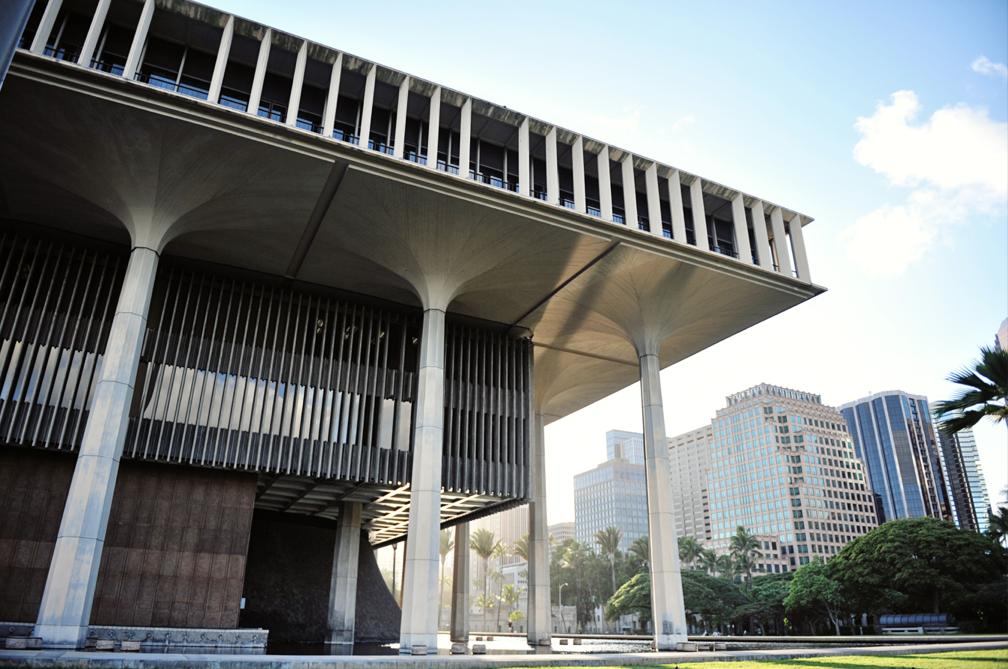A walking tour of downtown Honolulu, past shapes, under shadows, through more than 200 years of history.

[sidebar]
A Walking Tour:
Hawaiian Mission Houses Historic Site and Archives
554 South King Street
Kawaiaha‘o Church
957 Punchbowl Street
Hawai‘i State Capitol Building
415 South Beretania Street
Washington Place
320 Beretania Street
First Hawaiian Center
999 Bishop Street
Stagenwald Building
119 Merchant Street
Aloha Tower Marketplace
1 Aloha Tower Drive
[/sidebar]
The architecture of Hawai‘i tells an intricate story of the spirit and history of the kanaka maoli, or Hawaiian people, from the first Polynesian settlers to early European traders and missionaries. Materials of wood, lava, pili grass and coconut fronds were the basis of the Hawaiian home and illustrate the level of intellect and resourcefulness specific to ancient Hawaiian builders. From above, verdant landscapes fill the lines of the urban grid and offer those below shade and a resilient connec- tion to nature, a concept deeply rooted in Hawaiian culture. Today, structures of concrete, steel and glass sprout from the pillow of green, glimmering in the sun’s rays, creating a dra- matic panorama against the Ko‘olau Moun- tain range. The juxtaposition of the man-made with the natural forces at play provides an urban experience unique to Honolulu.
Historically, Honolulu has served as the cultural, political and economic hub of Hawai‘i for more than two centuries. “When the mis- sionaries first came here in 1820, there was no power, they didn’t have guns, they didn’t have military weapons, they came with ideas and it was through collaboration with the ali‘i [chiefs] that they had any affect on the islands at all,” says Thomas Woods, the executive director of Hawaiian Mission Houses Historic Site and Archives in Honolulu. “They were partners.” As merchants and missionaries began to settle and build accommodations with building tech- niques native to their geography, the ali‘i and royal family were eager to adopt foreign styles of architecture, radically and forever altering the built landscape
A quick 15-minute drive from Waikīkī, downtown Honolulu contains nearly 200 years of architecture within a one-mile radius. From the first missionary housing and church, to contemporary high-rises like the First Hawaiian Center, Downtown Honolulu is a heterogeneous mix of building forms and styles from every major historical period of Hawai‘i, with a growing list of complexes that are declared National Historic Landmarks on the National Register of Historic Places. Downtown Honolulu can be subdivided into four environs: Capitol District, Central Business District, Water- front and Chinatown, each with its own distinctive architectural composition.
An easy stroll through downtown Honolulu, past some of the landmarks listed below, makes it easy to explore Hawai‘i’s architectural history and to discover how building techniques of the past have come to shape our city today.







Originally published in:

Visit innov8magazine.com to view the full issue.

